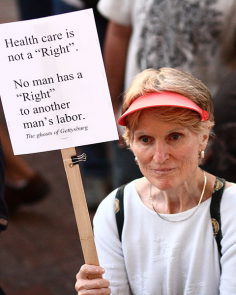
Legislation to create a Minnesota Health Insurance eXchange (HIX) is being debated in the Minnesota legislature. (SF 1 and HF 5) The HIX in each state is an essential part of the PPACA. The DFL majority is in a mad rush to get these bills passed by the end of March to meet PPACA deadlines.
The HIX is called a “marketplace”, but it’s not. The HIX is a tracking tool for the IRS. It is a web site that allows consumers to apply for health insurance coverage. The databases behind it will track insurance status, health status, and income to determine subsidies and/or penalties. The “marketplace” spin is nonsense, as I point out in my recent blog post, and this article about the application process.
The Minnesota HIX is said to be an “active purchaser”. This means the HIX will do our “purchasing” for us, and only allow those plans it has “purchased” to be offered through the HIX. What “marketplace” is improved by limiting choices to those few plans “purchased” for us? How does reducing customer choice in the HIX help its customers? Who is pushing the “active purchaser” plan, and why?
March 13th I got my answer. I attended the live taping of Truth to Tell. The program promised a panel of 6 to discuss the PPACA, but it wasn’t much of a discussion because the uniformity of opinion was nearly complete. The only “discussion” was how quickly the PPACA can be transformed into what the panel seemed to want, a “single payer” health care system. (Info about the March 13th show here. Video and audio not yet available on-line)
Late in the taping, a gentleman behind me asked a question: how can the HIX supporters claim to reduce medical costs, when there is nothing in the HIX legislation that reduces costs? The answer from the panel was “active purchaser”. If the HIX is an “active purchaser”, it can “negotiate” with the health care insurance companies.
Then it hit me – back-door rationing. The HIX will be the health insurance regulator. The HIX will have the power to grant monopolies to health insurance companies. Through those monopolies, the HIX will be able to dictate medical policy to hospitals, doctors, and other medical providers throughout the state. The HIX will be under enormous pressure to reduce overall costs, and it will use its power to control the practice of medicine, and the cost.
So I asked my own follow-up question: I have also read the bills, there is no cost reduction. Will “active purchaser” impose medical policy on the medical world to reduce costs? Is this back-door rationing?
The answer from the panel was: yes, but they wouldn’t use that term.
Note that the consumer, the patient, is not involved in this process at all. The only plans that are legal are the ones offered by the HIX. You are forced to buy one. You have an opportunity to “contribute” to the cost by paying some of the premiums, but you are, in no sense, a “customer” of either the insurance company, or the health care provider. You are merely a “cost”.
The open market is wonderful because it offers choices. If a vendor does not satisfy customers, there is always a line of new vendors waiting to do better. This is true of grocery stores, electronics, automobiles, restaurants, and just about every other part of our economy. Sensible consumers and competition keep costs low, and vendors efficient.
Not so with medical care. For the last 50 years, we have been chasing the illusion of “free” health care paid for by “someone else”. Econ 101 tells us that anything “free” will be overused, and anything paid for by “someone else” will lose pricing discipline.
The result? Despite mountains of regulations, mandates, and subsidies on medicine, we have seen dramatic increases in the price of medical care, and a robust demand for more, driving the total cost beyond reach.
It hasn’t worked. It will never work, because it ignores the reality that health care is an economic good, just like everything else in our economy.
In medical care today, we are living in a fool’s paradise. When someone is sick, money is no object. By law, every emergency room in every hospital is “free” to the person who walks in off the street. Patients are either “insured”, have public assistance, or are “indigent”. Doctors bill Medicare, or insurance companies directly. Patients almost never see a medical bill. It is so rare for an individual to pay his own bill, even for routine care, that most clinics can’t tell you what their prices are. Try it some time. It’s an eye opener.
The HIX push is a very old song – give us a little more money, and a little more power. Let us do more of what has already failed. Let us take care of you.
The last 50 years of failed policy should be heeded. Markets work. Mandates, regulations, and subsidies don’t. The HIX is more of the same, and will just do more damage, further separating us from our doctors, and separating those who benefit from those who pay.
The panel above was clear. Their goal is “single payer”, also known as socialized medicine. If you are comfortable with that, then the HIX is for you. If not, it is time to say “no”.

